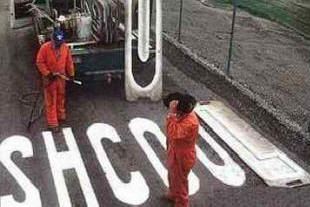Handling error in the classroom

 |
Step 1: recognising it |
This may sound obvious. After all, we all know when something
is wrong, don't we?
Usually, yes but there are two sorts of errors we need to be aware of:
- Real errors
- happen when a learner is grappling with a new piece of language or skill. We shouldn't be afraid of them, because they are part of the learning process (or should be).
- Slips
- happen when a learner is tired, distracted or just overloaded. Slips are not something we need to deal with usually because the learners can put them right for themselves.
 |
Step 2: explaining it |
  |
Task 1:
Can you think of any reasons why students may make errors? Click here when you have thought of something. |
- Ignorance
- the learner may simply have never learnt the form of the meaning and is just stabbing in the dark. This is most common at lower levels because that's where learners' needs often outstrip their abilities to produce language.
- Overgeneralising the rule
- sometimes, when a 'rule' has been learned, learners will over-extend it. For example, if you have learned the rule to add -ed to make a past tense, it seems logical to form catched. Equally, over-extending a rule might lead to the production of wonderfuller.
- First language interference
- all learners, especially adult ones, will draw on language(s)
they know to try to figure out a new one. This is most obvious
in the area of pronunciation, of course, but occurs frequently in
other areas:
Structure: the learner's first language may have a structure that looks similar but means different things. For example, the German structure of ich habe gesehen [I have seen, literally] often is better translated into English as I saw rather than I have seen. That's only one reason for finding out a bit about our learners' first languages.
Lexis: many languages, and not only European ones, have words which look the same but have different meanings. For example, simpatico in Italian means nice or friendly, sensibel in German means sensitive and un smoking in French is a dinner jacket. There are many hundreds of these so-called false friends.
 |
Step 3: fixing it |
This is where teachers need to think on their feet.
  |
Task 2:
There are questions to ask whenever you hear an error.
What might these be? Click here when you have thought of some ways to handle error. |
- Question 1: am I going to correct this?
- If the error isn't holding up communication and has nothing to
do with the subject of the lesson, it may be that correcting it will
lead you off on a tangent, chasing red herrings and serve to slow
down the lesson and confuse the learners. If that's the case
ignore it.
If, on the other hand, the error is impeding comprehension or is made in the language that is the target of what you are doing, then you will have to deal with it. - Question 2: do I need to correct this?
- Very often, learners can correct their own production so a quizzical look or stopping learners and getting them to retrace their steps and reconsider may be more effective than your correcting the error.
- Question 3: can anyone else correct the error?
- If the learners can't correct their own errors, perhaps someone else in the class can. If you think this is the case, give them the chance to do so.
- Question 4: how will I correct?
- A last resort is normally to give
the correct answer yourself. Often, learners can be led to discover
the right answer with questions and suggestions such as
There's something wrong with the order of the words
What preposition do we need here?
What tense should this be?
Are we talking about tomorrow or today?
Is this a long 'a' sound or a short one?
and so on.
If all else fails, however, there are, obviously, times when providing the right answer is the best approach providing you make sure that the learner can produce the correct language independently after you have done so.
Now you have the basics, you can have a look at the slightly more comprehensive guide to handling error in the initial plus section of the site. Much of what you have read here is repeated there so it should be simple to follow.
The next stage of this short course is concerned with moving forward, i.e., planning what to teach next (and after that).
